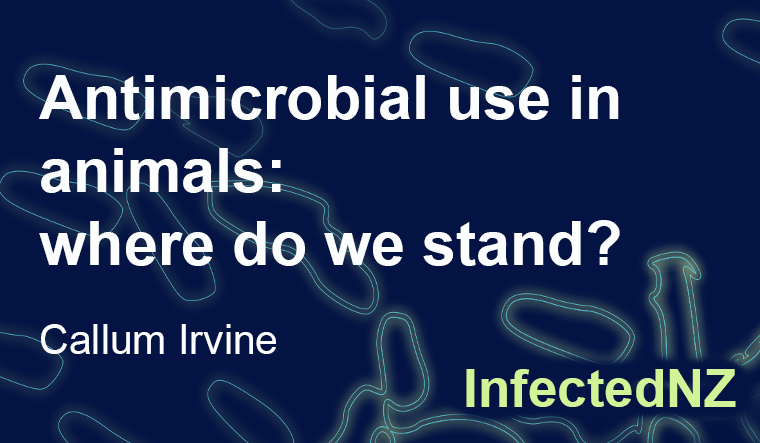One thing is clearer than ever: the wellbeing of animals, humans and the environment is inseparable and, on a global scale, no issue represents this complex relationship better than the rise of antimicrobial resistance.
The medical discovery that revolutionised our ability to treat disease in humans and animals is becoming its own worst enemy. The pressure is on the veterinary and medical communities internationally to find solutions. It’s a ‘One Health’ issue in its purest form.
Last year the New Zealand Veterinary Association (NZVA) tackled the issue of antimicrobial resistance (AMR) head-on. It challenged the veterinary profession, farmers, pet owners, government and industry to rethink the use of antibiotics for animals. It set an aspirational vision that “by 2030 New Zealand Inc. will not need antibiotics for the maintenance of animal health and wellness”.
It’s a big ask, and not necessarily a vision that everyone immediately supports. It’s also a carefully worded statement acknowledging that while the science is complex and sometimes contradictory, everyone in essence agrees that the more we use these valuable medicines, the more likely resistance will be selected for. It also acknowledges that the issue the veterinary profession must address most urgently is to reduce, refine, and replace the use of antimicrobials for maintenance (prophylactic and metaphylactic use) while maintaining their therapeutic use to protect the wellbeing of our animals.
The science of AMR is challenging, challenged, and still emerging, which means the issue is poorly understood by most people. What is poorly understood by even the scientific community is that, when measured against the estimated biomass of animals in the country, New Zealand is already the third lowest user of antibiotics for animals in the OECD.
Moreover, data published this year showed that while the average use of antibiotics in animals is 9.4mg active ingredient/kg biomass, the human use is 121mg active ingredient/kg biomass, 12.9 times higher and the 16th highest of the countries compared. This is a simple indicator of comparative use in what we all acknowledge to be a scientifically complex issue (we must, for example, also consider the critically important nature of the actives used in veterinary medicine and that many of these actives are for veterinary use only), but it reflects how effective regulation and control by veterinarians over prescribing practices is maintaining New Zealand in a position of world leadership in the stewardship of these vital medicines.
Dr Stephen Page, an internationally recognised veterinary pharmacologist, has proposed that the previous Hypercene era of profligate antimicrobial use is moving in to the Hypocene, era of over restraint. This is an inevitable step, he says, before the human and veterinary professions reach the Eucene, the era of appropriate use.
This may well be. In order to navigate to the Eucene, we must ensure that scientific evidence is used as the basis of any regulatory or stewardship changes made to address society’s growing concerns around antimicrobial usage. We must also ensure that access to these vital medicines is maintained to responsibly treat bacterial disease, for the wellbeing of animals, humans, and the environment.
Reference
Hillerton JE, Irvine CR, Bryan MA, Scott D, Merchant SC (2016). Use of antimicrobials for animals in New Zealand, and in comparison with other countries. New Zealand Veterinary Journal, Forthcoming articles, pp 1-7, Mar 2016.
About
Callum Irvine is an experienced vet and the Head of Veterinary Services for the New Zealand Veterinary Association (NZVA) where he champions veterinary leadership and advocates on behalf of the veterinary profession. Through his role he promotes science based policy development across all areas of veterinary science.
What is InfectedNZ?
Hey, Aotearoa. It’s time we had a chat about infectious diseases and what we’re going to do about the looming antimicrobial armageddon. That’s why we’ve asked leading health, social and economic researchers, and people with personal stories, to help us get real about our vulnerability and discuss solutions. Follow their blogs right here at tepunhahamatatini.ac.nz and watch the conversation spread across social media with #infectedNZ.
Backing it all up, wherever possible, is data from the good folk at Figure.NZ. Their super duper charts are based on data sourced from public repositories, government departments, academics and corporations. Check out their #infectedNZ data board and sign-up to create your very own data board on any topic that floats your boat.

